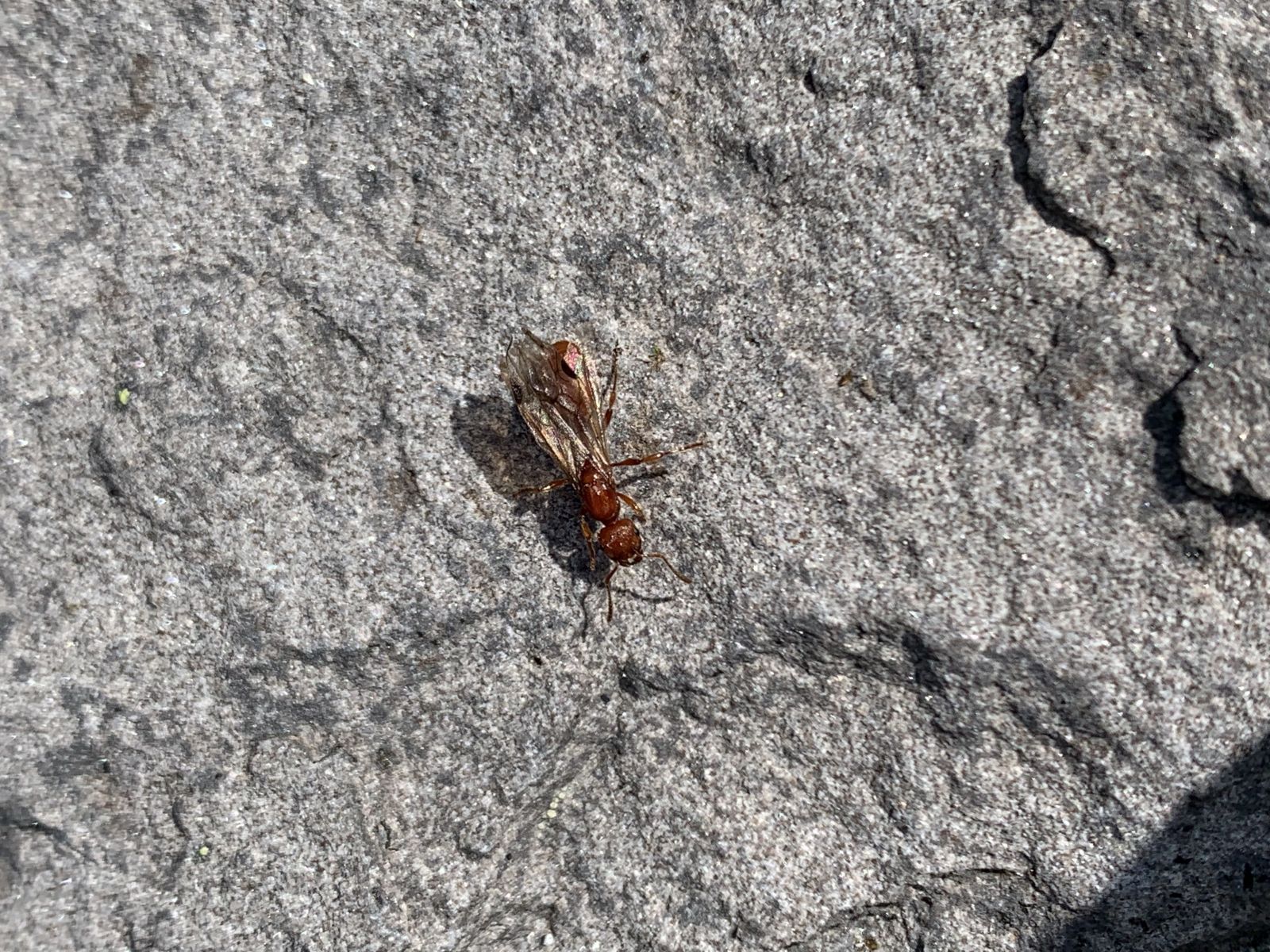Saw quite a few of these I am assuming girls flying in Mt Saint Helens crater last weekend on a field trip. Most things still desolate except for the ant queens flying?


Saw quite a few of these I am assuming girls flying in Mt Saint Helens crater last weekend on a field trip. Most things still desolate except for the ant queens flying?

I'm pretty sure they're some species of Pogonomyrmex, but they could also potentially be Pheidole.
Currently Keeping:
Camponotus chromaiodes, Camponotus nearcticus, Stigmatomma pallipes, Strumigenys brevisetosa, Strumigenys clypeata, Strumigenys louisianae, Strumigenys membranifera, Strumigenys reflexa, Strumigenys rostrata
That’s a pogonomyrmex
I figured. The head shape did seem a bit off for Pheidole.
Currently Keeping:
Camponotus chromaiodes, Camponotus nearcticus, Stigmatomma pallipes, Strumigenys brevisetosa, Strumigenys clypeata, Strumigenys louisianae, Strumigenys membranifera, Strumigenys reflexa, Strumigenys rostrata
Hi there! I went on a 6 month or so hiatus, in part due, and in part cause of the death of my colonies.
However, I went back to the Sierras, and restarted my collection, which is now as follows:
Aphaenogaster uinta, Camponotus vicinus, Camponotus modoc, Formica cf. aserva, Formica cf. micropthalma, Formica cf. manni, Formica subpolita, Formica cf. subaenescens, Lasius americanus, Manica invidia, Pogonomyrmex salinus, Pogonomyrmex sp. 1, Solenopsis validiuscula, & Solenopsis sp. 3 (new Sierra variant).
Any other shots?
Looks like manica to me, the abdomen sticking out from the end of the wings is not usually seen in pogonomyrmex, which usually have their gasters scrunched up and under the wings.

pogonomyrmex
Edited by ponerinecat, September 14 2019 - 9:20 AM.
Yeah, I realized where this was after I posted that. Better pictures would be helpful.
Edited by Martialis, September 14 2019 - 9:21 AM.

manica, with mostly straight petiole
Edited by ponerinecat, September 14 2019 - 9:21 AM.
I don't think its a Pogonomyrmex either, it's too long. M. hunteri or M. invidia is my guess.
Could not it be Myrmica rubra? an invasive European ant present in the state of Washington according to antmaps.org
Details on size and environment caught would be helpful along with other views of the ant like from the side, back, front, etc.
not myrmica, shape and size isn't right.
0 members, 1 guests, 0 anonymous users